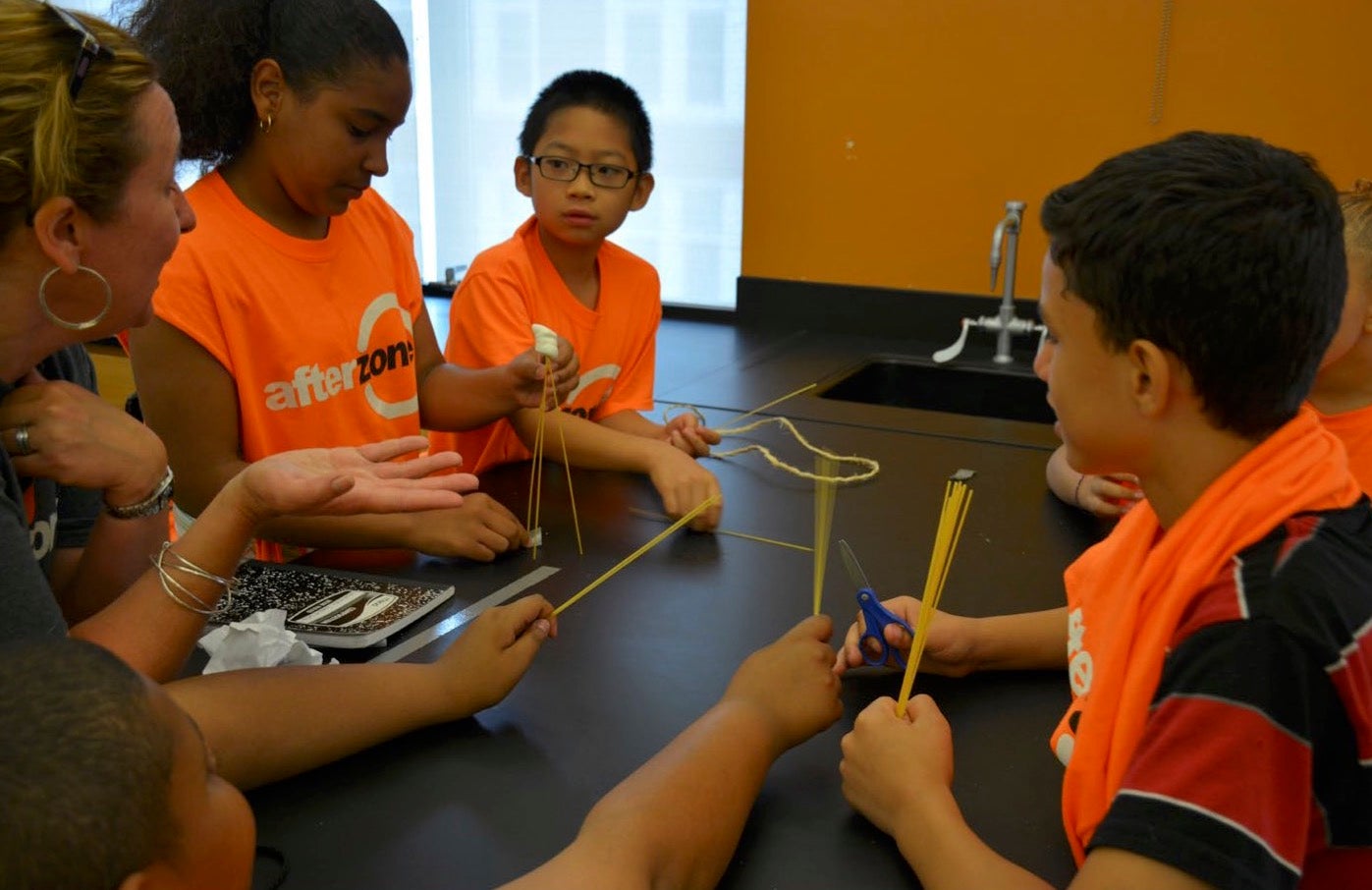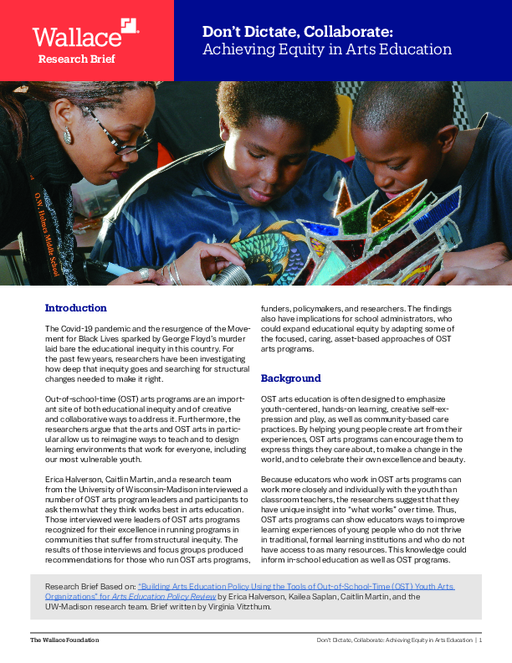Breadcrumb
- Wallace
- Reports
- Don’t Dictate, Collaborate Achie...
Don’t Dictate, Collaborate
Achieving Equity in Arts Education

- Author(s)
- Virginia Vitzthum
- Publisher(s)
- The Wallace Foundation
Summary
How we did this
The team interviewed 28 arts organization leaders; 17 educators/teaching artists; 8 researchers; 9 funders and policymakers; and 10 youth artists. Organization leaders and teaching artists were from OST arts programs in nonprofit and community arts organizations; museums; school-based programs with informal educators; government agencies; and philanthropic organizations. Interviews were conducted between September 2020 and June 2021.
Out-of-school-time arts programs in historically marginalized communities have much to teach policymakers, funders, and arts program leaders—as well as educators at large. Furthermore, the researchers of a paper in Arts Education Policy Review argue that the arts, and OST arts in particular, can help reimagine ways to design learning environments that work for everyone, including our most vulnerable youth.
Researchers Erica Halverson, Kailea Saplan, Caitlin Martin and their team at the University of Wisconsin-Madison interviewed a number of OST arts program leaders and participants to ask them what they think works best in arts education.
Four main categories of policy recommendations emerged out of this work:
- Focus on youth and community assets
- Expand beyond a program-centric model of funding and design
- Support creative professionals
- Rethink the design and implementation of assessment systems
Both the brief and the full paper break down the categories for four specific audiences: arts education leaders, funders, policymakers, and researchers. The findings could also have implications for others who work with young people and who are looking to expand educational equity by adapting some of the focused, caring, asset-based approaches of OST arts programs. Assets refers to everything young people bring to an OST arts program. This can include expertise with art forms, cultural histories, and popular culture knowledge and interest. It also includes the cultural, racial, and historical traumas young people carry with them as the topics and questions that matter for artmaking.

OST arts programs in historically marginalized communities have much to teach policymakers, funders, and arts program leaders – as well as educators at large.
Key Takeaways
- OST arts programs in historically marginalized communities have much to teach policymakers, funders, arts program leaders, and educators.
- OST staff have the potential to work more closely with individual youth than classroom teachers can and the arts can allow for asset-based learning, as children make sense of their lives through art.
- Those looking to expand educational equity through arts education can start with these four recommendations:
- Focus on youth and communities
- Expand beyond program-centric models
- Support creative professionals
- Rethink assessment systems

